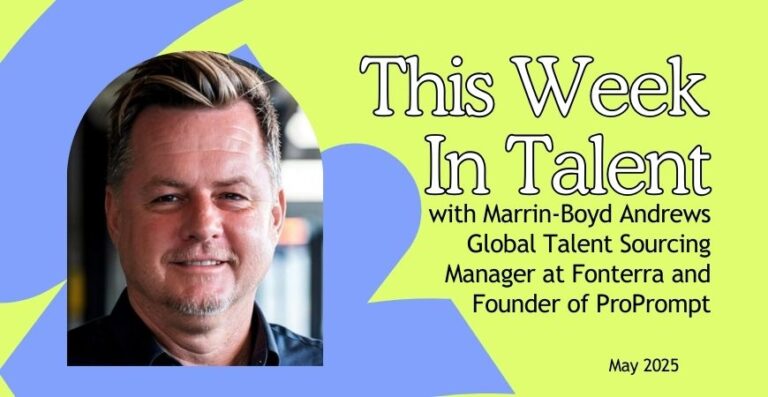The talent shortage, the pandemic, and the dislike many potential candidates have for bureaucratic firms make recruiting even more challenging than it has been. One of the challenges recruiters face in attracting talent is the inability to market jobs effectively.
We need to recognize that recruiting is fundamentally a marketing function.
To attract talent and differentiate your firm from others, you must better attract and engage the talent you seek. Posting jobs, using employee referrals and searching the internet are inadequate.
Most recruitment resembles the way products were sold at the turn of the last century. Shopkeepers kept their goods either out of sight of the customer or behind shelves and in drawers that were only accessible by the shopkeeper. They waited for a potential buyer to show up. The buyer was supposed to know what they wanted and ask for it. A customer had to ask for something specific, and the merchant showed them only that one item. There was no engagement, no selling, and no touting that product’s benefits or the benefits of other similar products.
Eventually, innovative stores like Macy’s changed by displaying items openly, running ads, and then targeting them to their potential prime customer – women. They offered special items to well-known socialites and developed the entire fashion world that we know. They relied on gossip and word of mouth to attract new referral customers. Window displays created dream worlds and played to emotions. They encouraged salespeople to engage with the customers, build relationships, and even try on clothes or demonstrate the product.
Recruitment has a lot to learn from this story and marketing. We do a lousy job of making our open positions attractive. We do not like to market or sell because we think that is in some way improper and that it is better to cloak our jobs in boilerplate and obfuscate what is needed.
We are also lousy at differentiating our firm from others. The primary differentiator between companies is often only their product brand, public image, and emotional appeal. Why work for Google over Facebook? The pay is roughly similar, benefits are great, and management is similar. The primary reason is a belief that one is better than the other somehow. This opinion is mainly subjective, built or weakened by friends, social networks, and the media.
Think about what we usually do to “advertise” a position. We publish a job posting that is rarely interesting or even readable. It is full of jargon, and every savvy candidate knows that writing is probably far from reality. Only a handful of firms give a potential candidate a genuine sense of what the job is all about. A few create day-on-the-job videos, but these are often not reflective of reality.
A person applies for only a posted position or that they know about. The candidate is a passive participant entirely reliant on the recruiter and subsequently a hiring manager for information or any enticement to want the position. Many jobs are not advertised at all or advertised only lightly. A recruiter generally decides which job a candidate is best suited for and gets no input from the candidate on what they might like or be good at. The recruiter controls everything by reaching out, interviewing, and ultimately recommending the candidate. The candidate’s role is to be compliant, somewhat subservient, and showcase their talent. While there are variations, it is a fair summary of most recruiting processes.
If we suppose the recruitment goal is to bring the best possible people to the organization – the people who will accomplish the objectives, sell the product or service, design, and innovate, then we need to attract candidates from as broad a spectrum as possible. We need to have the attitude that by interacting together and learning more about each other, we can find a good fit for both the candidate and the firm.
There are three areas where recruiting functions can begin to make the changes that will improve their marketing ability and keep them relevant and valuable.
1. Design
Websites, social media, and communication tools need to be redesigned to deliver a personalized, customized experience to the candidate and go so far as to invite them into conversation with current employees or experts within the firm. Candidates should decide where to focus their interests and when to look for opportunities. It is the recruiter’s job to make sure they have enough information about all options to make good decisions. There should be tools to screen potential candidates against various job competencies and skills.
The usual, simple, and one-directional recruitment websites we are used to are inadequate. Even social media pages that are updated only occasionally offer little to no value to a candidate who is seeking current information or looking for help in understanding or needs a question answered.
Other aspects of the redesign include redesigning how we describe jobs. We need to make them both more exciting and attractive and better indicators of what the work is like. Willing employees should have the opportunity to talk with potential candidates and referral programs should be personalized and highly responsive. Mobile apps need to be tested for their appeal and effectiveness.
Candidates are sophisticated in seeking out information about the corporate culture and often research who works at the organization. They check to see what employees are saying. They look at social media and engage their network to become aware of issues, culture, working style, and even who they will potentially work for. There are no secrets, and open communication is critical to creating trust.
2. Data
Recruiters need information gleaned from data to build the most useful engagement programs, websites, and social media tools. Many corporate websites and social media sites collect data – the number of hits, retweets, likes, clicks, and so forth, but few make much sense of the data.
Does it matter that one item was retweeted more than another? Do more Likes mean more hires? What data elements are most accurate in predicting a good candidate versus a mediocre one? What content draws the most qualified candidates? When do people engage in the website, and with who? And so on.
Every recruiting function needs to collect this kind of data and analyze it. Decisions about new content and areas to focus on can be made better and faster. You should have a data scientist involved who can help answer these kinds of questions. Perhaps you can pull together a cross-functional team of data scientists, IT folks, and marketing people to get the information you need to continuously learn and update your content, websites, and social media.
You can only target content and draw in the most qualified people when you have the correct data.
3. Engagement
Using the tools and data that I have described, recruitment functions can become engagement hubs, information centers, and conduits where employees and potential candidates can get to meet each other, learn from each other and find ways to collaborate, whether it is as a full-time regular employee or as a part-time or sometime employee or in some informal way.
Think of this as a journey. For some, it will be the first time they have heard of your organization, others will know some but not a lot, and for others, your firm may be an old story. But wherever they are, there should be compelling content, videos, and perhaps games or other tools that enlighten, engage and keep them involved.
To do this will require redesigning the recruiting function and moving it from a transactional, sequential, one-directional process into one that is relationship-based, multi-directional – involving a cross-section of employees and potential candidates – and whose end goal is not necessarily a hire but an engaged and interested person that might become a candidate at some point.
The formula for recruiting success is beginning to look a lot like a marketing strategy:
Recruiting Success = Data + Targeted Content + Authentic Information + Candidate Interaction + Candidate Experience + Brand
A note on brand:
Please do not confuse what I am saying with recruiting brand. Recruiters have spent too much time relying on their recruiting brand to differentiate themselves when, in reality, it is the ability to shape opinion, create emotion and create authentic interaction between candidates and employees that leads to the best results.
Employment brand is only a tiny piece of the equation. For example, Macy’s brand is an integral part of its success, but it also needs to make sure salespeople engage customers and give discounts and enticements to come into the store. They need ways to solicit shopper feedback. They need displays that create emotion and create a desire to buy. They also need to collect and analyze data about what customers buy, when they buy, what actions improve sales and inhibit sales, and so forth. A successful marketing or recruiting process is far more than just a brand.
This article first appeared in the Future of Talent Newsletter and has been re-published here with permission.
Cover image: Shutterstock







